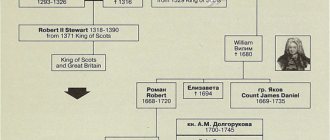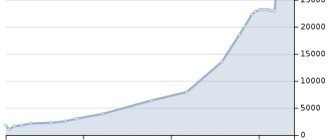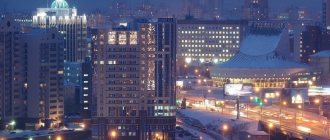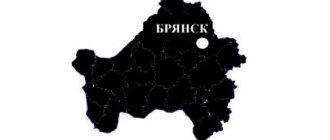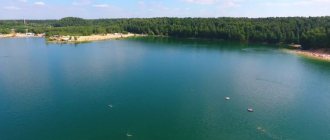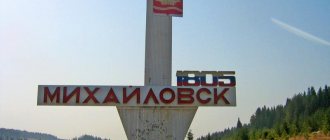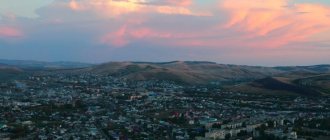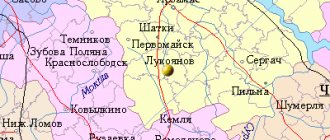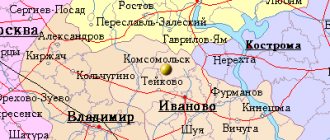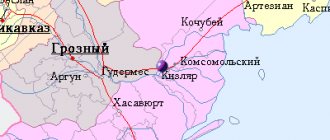| city of regional subordination with administrative territory[1] / urban district[2] | |
| city of Stupino urban district Stupino | |
| Flag | Coat of arms |
- (1,57 %)
Stupinsky district
- an administrative-territorial unit (district) and a municipal entity of the same name (municipal district), which existed until June-July 2022 in the Moscow region of Russia.
On June 6, 2022, by law No. 82/2017-OZ, the municipal formation of the Stupinsky municipal district was transformed into the municipal formation of Stupino urban district
with the abolition of all previously included settlements.[6]
On July 8, 2022, the administrative-territorial unit Stupinsky district was transformed into the city of regional subordination of Stupino
with administrative territory
.[7][8]
The administrative center is the city of Stupino.
Physiographic characteristics
Geographical position
The territory of the Stupino urban district of the Moscow region is located in the west of Russia, in the European part of the country. Within Eurasia, the urban district is located in the west of the large physical-geographical country of the East European Plain; in the central part of the zone of mixed and broad-leaved forests, the area is also characterized by pine forests. Within the described territory, the PTC of a smaller rank is the province - the Moskvoretsko-Oka moraine-erosive plain, in the southeast of which the urban district of Stupino is located.
The area of the urban district is about 1.7 thousand km2, the length from north to south is about 53 km (from 55° 16′ 49″ to 54° 50′ 30″ N), from west to east – 54.4 km (from 37° 41′ 49″ to 38° 27′ 46″ E). Regarding the territory of the Moscow region, the urban district is located in its southern part. In the south-west it borders with the Serpukhov municipal district, in the west - with the Chekhov urban district, in the north-west - with the Domodedovo urban district, in the north - with the Ramensky municipal district, in the north-east - with the Voskresensky municipal district, in the east - with Kolomna urban district, in the southeast - with the Ozyory urban district, in the south - with the Kashira urban district of the Moscow region. Also in the south, for a short distance (about 4 km), the urban district of Stupino borders on the Yasnogorsk municipal district of the Tula region.
The Stupino urban district, along with the Serpukhov municipal district and the Ozyory urban district of the Moscow region, occupies the southernmost position within the Moskvoretsko-Oka moraine-erosive plain.
The main rivers are Oka, Kashirka, Lopasnya, Gorodenka, Severka.
Story
The Stupino district was formed on June 3, 1959 from the territory subordinate to the city of Stupino and part of the abolished Mikhnevsky district. The district initially included the working villages of Mikhnevo and Zhilevo, as well as the village councils of Bolshe-Alekseevsky, Gorodishchinsky, Dubnevsky, Ivanovsky, Koledinsky, Krutyshkinsky, Kuzminsky, Lapinsky, Leontievsky, Luzhnikovsky, Malinsky, Meshcherinsky, Novoselkovsky, Safronovsky, Semenovsky, Sitne-Shchelkanovsky, Starositnensky and Starinsky.
On July 2, 1959, Tatarinovsky s/s was transferred from Podolsky district to Stupinsky. On July 31, the Krutyshkinsky s/s was abolished. On December 26, Lapinsky s/s was renamed Khatunsky.
On August 20, 1960, Koledinsky and Semenovsky s/s were abolished. Leontyevsky s/s was renamed Alfimovsky.
On July 31, 1962, the Safronovsky s/s was abolished.
On February 1, 1963, the Stupino district was abolished, and its territory was transferred to the Stupino enlarged rural district.
On January 13, 1965, the Stupinsky rural district was transformed into the Stupinsky district (Decree of the Presidium of the Supreme Council of the RSFSR) (Gazette of the Supreme Council of the RSFSR. - 1965. - No. 3 (329) of January 18. - P. 68-71).
On April 1, 1966, Starinsky s/s was renamed Aksininsky.
On April 5, 1967, Leontievsky s/s was formed.
On April 4, 1973, Semenovsky s/s was formed.
On February 12, 1987, the r.p. was formed. Malino, the Malinsky s/s was abolished and the Bereznetsovsky s/s was formed.
On February 3, 1994, village councils were transformed into rural districts.
On February 1, 2001, the city of Stupino lost its status as a city of regional subordination (Law of the Moscow Region of January 17, 2001 No. 12/2001-OZ, Podmoskovnye Izvestia, No. 20, 02/01/2001).
On March 15, 2004, the working village of Prioksk, Moscow Region, was merged with the city of Stupino (Resolution of the Governor of the Moscow Region dated March 15, 2004 No. 33-PG, “Information Bulletin of the Government of the Moscow Region”, No. 4, 04/26/2004).
By 2005, the Stupinsky district included the following rural districts: Aksininsky rural district, Alfimovsky rural district, Bereznetsovsky rural district, Bolshealekseevsky rural district, Gorodishchensky rural district, Dubnevsky rural district, Ivanovo rural district, Kuzminsky rural district, Leontyevsky rural district, Luzhnikovsky rural district, Meshcherinsky rural district, Novosyolkovsky rural district, Semenovsky rural district, Sitne-Shchelkanovsky rural district, Starositnensky rural district, Tatarinovsky rural district and Khatunsky rural district[9].
In the Stupino municipal district until June 9, 2022 there were 4 urban and 3 rural settlements:
| № | Urban and rural settlements | Administrative center | Number of settlements | Population | Area, km2 |
| 1 | Urban settlement Zhilevo | working village of Zhilevo | 24 | ↗7983[5] | 156,08[10] |
| 2 | Urban settlement Malino | working village of Malino | 29 | ↘7396[5] | 250,75[10] |
| 3 | Urban settlement Mikhnevo | working village of Mikhnevo | 21 | ↘15 539[5] | 110,28[10] |
| 4 | Urban settlement Stupino | city of Stupino | 45 | ↘75 476[5] | 457,83[10] |
| 5 | Rural settlement Aksininskoye | Aksinino village | 41 | ↘6836[5] | 282,17[10] |
| 6 | Rural settlement Leontyevskoye | Leontyevo village | 37 | ↘2863[5] | 174,32[10] |
| 7 | Rural settlement Semyonovskoye | Semenovskoe village | 41 | ↗5239[5] | 276,30[10] |
June 6, 2022 within the boundaries of the abolished municipal formation Stupinsky municipal district
the urban district of Stupino,
was formed [6] All rural and urban settlements previously included in the municipal district were abolished.
On June 14, 2022, the working villages of Zhilevo, Malino and Mikhnevo were placed under the administrative jurisdiction of the city of Stupino (Resolution of the Governor of the Moscow Region dated June 14, 2022 No. 276-PG, Official Internet portal of the Government of the Moscow Region https://www.mosreg.ru, 14.06 .2017).
On June 23, 2022, the rural settlements of Aksininskoye, Leontyevskoye and Semenovskoye were abolished (Resolution of the Governor of the Moscow Region dated June 23, 2022 No. 296-PG, Official Internet portal of the Government of the Moscow Region https://www.mosreg.ru, 06/23/2017).
On July 8, 2022, the administrative-territorial unit Stupinsky district was transformed into the city of regional subordination of Stupino
with administrative territory
.[7].[8]
Stupino
Foundation of Stupino. Village Stupinskaya
At the beginning of the 16th century, near the Kashirskaya road, which connected Kashira with Moscow, next to the lands of the village of Kremichny, the Stupinsky repair house was founded. It was first mentioned in chronicles in 1507. The Grand Duke of Moscow Vasily III Ivanovich granted the repairs, along with the surrounding villages, to the abbot of the Trinity Belopesotsky Monastery, Vladimir. Most of the villages located on the lands of the modern city of Stupino were founded on monastic lands. In 1511 Pochinok was already mentioned as the village of Stupinskaya. Apparently, by this time the number of households in the settlement had increased.
By the middle of the 16th century, the monastic villages in terms of the number of courtyards in them were the largest in the Turov camp. The village of Stupino was surpassed only by the village of Vargasovo, but after it was burned by the Crimean Tatars in 1571, the village of Stupino became the largest settlement of the camp.
The first detailed description of Stupino is found in a scribe’s book of 1578: “A village on a screwdriver in Kremichensky, 2 courtyards of monastery servants, 12 peasant courtyards and 7 peasant courtyard places. There are 42 thin crops of arable land, and I will plant 118 crops in the field, and in two more fields along the same line. The hay is collected in the fields and ravines for 130 kopecks. There are 20 dessiatines of arable forest, 10 dessiatines of uncultivated forest.” The village was located on the territory of the Turov camp of the Kashira district and was part of the estate of the Belopesotsky monastery.
During the military conflicts of the early 17th century during the Time of Troubles - the uprising of Ivan Bolotnikov (1606–1607), the Polish intervention - the population of the village of Stupino apparently decreased significantly and did not recover even after 15 years. In 1627 there were 19 households here, of which 16 were peasant households and 3 were bobyl households. According to data from 1677, there were 18 peasant and bobyl households in Stupino, with 63 male residents. By 1710, male residents had increased to 102.
In the 18th century, part of the land of the modern Stupinsky district was transferred to the ownership of landowners. Among them were such noble families as the Sheremetyevs, Volkonskys, Orlovs, and Buturlins. In 1770, after the General Land Survey in the provinces of central Russia, the village of Stupino became part of the Belopesotsk economic volost. During this period, in Stupino, located “on both sides of the Moscow road and on the left side of the Kremichensky ravine,” there were 23 households and 235 residents of both sexes.
In 1852, the village was part of the Kravtsovskaya volost of the state department; 52 households and 408 inhabitants were listed here. According to data from 1857, a stone chapel was noted in the village of Stupino, which was apparently built at the turn of the 1840s–1850s.
In the “List of populated places of the Moscow province” for 1862 (according to information from 1859), Stupino is listed as a state village of the Serpukhov district “near wells”, 45 versts from the district town of Serpukhov. The village has 51 households and 462 residents of both sexes - 218 males and 244 females. There are no public places listed in the document. By 1874, the number of households in Stupino had already increased to 65, and male residents to 245.
In 1860, a school was opened in the village, in which 26 boys and 8 girls studied. The school was located in a one-story house. In the 1890s. In Stupino, a stone chapel “In the name of the Mother of God, quench my sorrows” was built, which stood until the 1960s. According to a survey of 1893, in the village during this period there were 65 households and 480 inhabitants - 250 men and 230 women. In 1894, a new parish school building was built at the expense of the trustee, peasant A.I. Klykov. The building was one-story, wooden, covered with iron. In 1903, there were 35 children studying at the school.
According to information from 1909, there were 60 households and 364 residents in Stupino - 172 males and 192 females. Public places include 2 tea shops. By 1913, the number of households reached 77.
Stupino in the 20th century
At the end of the 19th and beginning of the 20th centuries, the Moscow-Pavelets railway was built through the village of Stupino.
In the early 1930s. a decision was made to build a large industrial enterprise on the territory of the Stupino village council - the Kashira Electric Locomotive Plant. For the purpose of designing the future giant plant, a special division, Elektrovozstroy, was created. The planned capacity of the enterprise was expected to reach 1,400 electric locomotives per year in the future. On July 26, 1931, the All-Union Electrotechnical Association began designing the plant.
In 1932, construction began on a railway station near the village of Stupino on the Paveletsky direction and the Kashira Electric Locomotive Plant. At the same time, a preliminary design of the future satellite city was prepared, which was to be located south of the plant and reach a population of more than 100 thousand people. On June 30, 1932, construction of the city began. The first workers' dugouts appeared, and soon the first barracks. On October 24, 1932, the first issue of the plant’s newspaper was published under the name “Electrovoz”, which later changed its name several times: “Stakhanovets”, “Front Soldier”, “Victory Banner”, today it is the newspaper “Stupinsky Metallurgist”. In 1933, the first school with a gym and 12 classrooms was built, which immediately accepted 364 children. In the same year, wooden buildings for a bakery, a bathhouse and a laundry were erected (in the area of modern Pushkin Street).
On April 21, 1934, by the decision of the Moscow Regional Executive Committee, the village of Elektrovozstroy and the village of Stupino were united into one settlement - the working village "Electrovoz". The first streets appeared, wooden post office buildings, a kitchen factory, a police room, a winter club, an outpatient clinic and a hospital with 40 beds were built. A spacious brick school was opened, with 820 children studying there. A kindergarten for 60 places and a nursery for 30 places, several shops, and a canteen began operating. During 1934, 26 two-story wooden frame houses appeared in the village.
By 1935, the capacity of the electric locomotive plant was revised and determined to be 250 passenger electric locomotives per year, and the potential population of the city decreased to 40 thousand people. The plant employed 1,164 main and 600 auxiliary workers, 272 engineering and technical workers and 253 office workers. The first three-story residential buildings and a four-story high school were built in the village. Construction of a hotel, stadium, and sports ground has begun.
In 1936, a metallurgical plant began to be created on the basis of the construction of an electric locomotive plant. The city has cobblestone and asphalt sidewalks. By the end of 1937, the total area of industrial facilities exceeded 57 thousand square meters. m. In one year, 1937, 6 brick, 8 frame and 2 timber residential buildings with a total area of almost 13 thousand square meters were inhabited. m. From 1937 to 1939 The production of UT-1 training aircraft was carried out on the premises of the woodworking plant. A total of 200 aircraft were assembled, but their production ceased in 1939.
In 1939, the workers' village of Elektrovozstroya was transformed into the city of Stupino. By decree of the Presidium of the Supreme Soviet of the RSFSR dated September 14, 1939, Stupino was allocated as a city of regional subordination. On January 1, 1939, the city's population was about 22,000 people, the housing stock was 579 buildings with an area of more than 92 thousand square meters. m. At the beginning of 1940, the city newspaper “Bolshevik” began to be published, the chief editor of which was V. A. Shekhov. By the end of 1940, the construction of a new bakery with a capacity of 48 tons of bread and 6 tons of confectionery and crackers per day was completed.
On December 30, 1940, the general design of the city of Stupino was approved, which provided for an estimated population of 40,000 people. The project planned a large list of public buildings and institutions, including: the House of Soviets, the House of Culture, a museum, a train station, a car park, a central stadium, a hotel, a maternity hospital and many others. In 1941, the Zimny cinema was built and received its first visitors. In the same year, construction began on the Palace of Culture, which was completed in the 1960s.
During the Great Patriotic War of 1941–1945. about 15 thousand residents of the city of Stupino and the region fought on the fronts, defending their homeland. About 14 thousand people were awarded orders and medals. About 12 thousand soldiers and officers did not return from the war, giving their lives in the fight against the Nazi invaders. The metallurgical plant, called at that time “Plant No. 150” of the People’s Commissariat of the Aviation Industry, produced 126 trains of products during the war years. By decree of the Presidium of the Supreme Soviet of the USSR dated September 16, 1945, the plant was awarded the Order of Lenin. Many workers and employees of the plant were awarded orders and medals.
With the end of the war, the city returned to peaceful life and work. In the fall of 1945, the Stupino Music School opened in the city. In 1946, the aviation and metallurgical technical school, which had occupied it in the 1950s, resumed its work. a new building, today it is the Stupino Aviation and Metallurgical College named after. A. T. Tumanova. Since 1946, electrification of suburban villages annexed to the city began, and hydroelectric power stations were organized in Antipin, Khochem and Trostniki. By October 1947, Plant No. 150 exceeded pre-war production levels by 14.9%. The construction materials plant began operating.
In 1946–1947 The construction of the Stupino thermal power plant, which began in the pre-war years, was resumed. The new project provided for increasing the power of the thermal power plant to 250 thousand kilowatts. In May 1950, the Stupinskaya CHPP produced its first current, and in 1955 it was finally put into operation and became one of the largest in the Moscow region. On February 26, 1948, a decision was made to organize a telephone exchange in the city of Stupino. By the end of 1957, there were already 617 telephone numbers in the area.
In 1951, seven-year school No. 3 was built and accepted its first students; later, its building housed a boarding school, the city department of public education, a sports school, and an art school. In the center of Stupino there is a park with a fountain decorated with concrete swans. At the end of 1952, buses went through the city from Kashira to Moscow. From 1950 to 1955 A new clinic, laundry, stadium, and Sports Palace began operating in Stupino.
The city of Stupino in the modern period
Until the 1990s Stupino had the status of a “closed” city, in which high-tech enterprises of the military-industrial complex were concentrated. Now old industrial giants are being successfully repurposed, and the number of small and medium-sized businesses is growing.
Today Stupino is the administrative center of the Stupinsky district, a modern and environmentally friendly city, one of the pearls of the Moscow region, a comfortable city with a high level of amenities and developed infrastructure.
In 2002, nearby settlements were included in the city: the settlement of the Obraztsovo state farm branch, the villages of Bolshoye Obraztsovo and Maloye Obraztsovo, in 2004 the village of Prioksk (former ZATO Stupino-7) also became part of the city of Stupino.
Population
| Population | |||||
| 1959[11] | 1970[12] | 1979[13] | 1989[14] | 2002[15] | 2006[16] |
| 57 098 | ↗57 814 | ↘52 169 | ↘49 439 | ↗116 007 | ↗121 836 |
| 2009[17] | 2010[18] | 2011[19] | 2012[20] | 2013[21] | 2014[22] |
| ↘117 504 | ↗119 282 | ↗119 499 | →119 499 | ↘119 028 | ↗119 190 |
| 2015[23] | 2016[24] | 2017[5] | |||
| ↗120 121 | ↗121 070 | ↗121 332 | |||
The population of the district is 121.3 thousand people, including 84.2 thousand people living in urban areas[25]. On the territory of the Stupino municipal district there is one city (Stupino), 3 urban-type settlements (Zhilevo, Malino, Mikhnevo), 250 rural settlements[26].
Vacancies at the employment center of the city of Stupino
Proximity to the Russian capital and a large number of operating enterprises could not but have a positive impact on the employment situation in the city of Stupino. However, what immediately attracts attention is that the city needs people with engineering specialties. Here every engineer and technician will find a job to his liking. Moreover, salaries by Russian standards are quite decent. Not every Russian city can boast of such prices.
The minimum is not lower than 14,200 rubles, the most common is around 20-25 thousand rubles, and the maximum is 50-80 thousand rubles. That is, of course, you won’t become millionaires there, but it’s not bad for ordinary life. But those who have a work orientation other than engineering may have problems finding work. Firstly, other vacancies have significantly lower salaries, and secondly, they are much less common, which means there may be competition for a position.
Settlements
Main article: List of settlements in the Stupino urban district
List of settlements in the region
| № | Locality | Type | Population | former municipality |
| 1 | 2nd Five Year Plan | village | →0[27] | rural settlement Leontievskoye |
| 2 | Avdotino | village | ↘75[27] | rural settlement Aksininskoye |
| 3 | Avdotino | village | ↘7[27] | rural settlement Semyonovskoye |
| 4 | Avdulovo-1 | village | ↗11[27] | rural settlement Leontievskoye |
| 5 | Avdulovo-2 | village | ↗5[27] | rural settlement Leontievskoye |
| 6 | Agarino | village | ↗18[27] | rural settlement Semyonovskoye |
| 7 | Akatovo | village | →0[27] | rural settlement Aksininskoye |
| 8 | Aksinino | village | ↗638[27] | rural settlement Aksininskoye |
| 9 | Aksinkino | village | ↗16[27] | urban settlement Stupino |
| 10 | Aleevo | village | ↗54[27] | urban settlement Stupino |
| 11 | Aleevo-2 | village | ↗5[27] | urban settlement Stupino |
| 12 | Aleshkovo | village | ↗12[27] | urban settlement Stupino |
| 13 | Alfimovo [comm. 1] | village | ↘1381[27] | rural settlement Leontievskoye |
| 14 | Ananino | village | ↗19[27] | rural settlement Semyonovskoye |
| 15 | Antipino | village | ↗18[27] | rural settlement Semyonovskoye |
| 16 | Babeevo | village | ↗12[27] | urban settlement Malino |
| 17 | Baidikovo | village | ↗22[27] | urban settlement Zhilevo |
| 18 | Batayki | village | ↗23[27] | urban settlement Stupino |
| 19 | Beketovo | village | ↗16[27] | rural settlement Semyonovskoye |
| 20 | Belykhino | village | ↘2[27] | rural settlement Aksininskoye |
| 21 | Bereznetsovo | village | ↘1209[27] | urban settlement Malino |
| 22 | Bereznya | village | ↗16[27] | urban settlement Zhilevo |
| 23 | Bespyatovo | village | ↘288[27] | rural settlement Aksininskoye |
| 24 | Bessonovo | village | ↘4[27] | rural settlement Aksininskoye |
| 25 | Blagovskoe | village | →0[27] | rural settlement Aksininskoye |
| 26 | Bobrovo | village | ↘53[27] | rural settlement Aksininskoye |
| 27 | Bolshoye Alekseevskoye | village | ↗1449[27] | rural settlement Aksininskoye |
| 28 | Bolshoye Lupakovo | village | ↘4[27] | rural settlement Leontievskoye |
| 29 | Bolshoye Scryabino | village | ↘4[27] | rural settlement Aksininskoye |
| 30 | Bortnikovo | village | ↘34[27] | urban settlement Malino |
| 31 | Bunkovo | village | →0[27] | rural settlement Aksininskoye |
| 32 | Burtsevo | village | ↗16[27] | urban settlement Malino |
| 33 | Valtsovo | village | ↗35[27] | urban settlement Stupino |
| 34 | Vasilevo | village | ↘2[27] | rural settlement Aksininskoye |
| 35 | Vasilyevskoe | village | ↘37[27] | urban settlement Malino |
| 36 | Vaskovo | village | ↘17[27] | rural settlement Leontievskoye |
| 37 | Velyaminovo | village | ↗237[27] | urban settlement Mikhnevo |
| 38 | Verzilovo | village | ↗43[27] | urban settlement Zhilevo |
| 39 | Verkhovlyan | village | ↘3[27] | rural settlement Leontievskoye |
| 40 | Wihorna | village | ↘6[27] | urban settlement Stupino |
| 41 | Vladimirovo | village | ↘9[27] | rural settlement Leontievskoye |
| 42 | Renaissance | village | ↗17[27] | urban settlement Zhilevo |
| 43 | Teamsters | village | →0[27] | urban settlement Stupino |
| 44 | Volkovo | village | →0[27] | rural settlement Leontievskoye |
| 45 | Voskresenki | village | ↗97[27] | urban settlement Stupino |
| 46 | Gladkovo | village | ↘3[27] | urban settlement Stupino |
| 47 | Glebovo | village | ↗1[27] | urban settlement Malino |
| 48 | Golovlino | village | ↘5[27] | urban settlement Stupino |
| 49 | Golochelovo | village | →0[27] | rural settlement Aksininskoye |
| 50 | Gorki | village | ↘13[27] | rural settlement Semyonovskoye |
| 51 | Gornostaevo | village | ↗1[27] | rural settlement Leontievskoye |
| 52 | Settlement | village | ↗1256[27] | urban settlement Stupino |
| 53 | Gorodnya | village | ↘29[27] | rural settlement Aksininskoye |
| 54 | State stable | village | ↗65[27] | rural settlement Leontievskoye |
| 55 | Gridkovo | village | ↘4[27] | rural settlement Semyonovskoye |
| 56 | Gridyukino | village | ↗23[27] | rural settlement Semyonovskoye |
| 57 | Gryzlovo | village | ↗34[27] | rural settlement Semyonovskoye |
| 58 | Dvoryaninovo | village | ↗12[27] | urban settlement Zhilevo |
| 59 | Devyatkino | village | ↘141[27] | urban settlement Malino |
| 60 | Dorky | village | ↗22[27] | rural settlement Leontievskoye |
| 61 | Road workers | village | ↘24[27] | urban settlement Zhilevo |
| 62 | Dubechino | village | ↘22[27] | rural settlement Semyonovskoye |
| 63 | Dubnevo | village | ↘1394[27] | urban settlement Malino |
| 64 | Yeganovo | village | →6[27] | rural settlement Leontievskoye |
| 65 | Zhilevo | town | ↗2342[28] | urban settlement Zhilevo |
| 66 | Zhilevo | village | →0[27] | urban settlement Zhilevo |
| 67 | Zabelino | village | ↗12[27] | urban settlement Zhilevo |
| 68 | Zavorykino | village | ↗13[27] | rural settlement Semyonovskoye |
| 69 | Zalugi | village | ↗6[27] | rural settlement Semyonovskoye |
| 70 | Zankino | village | ↘13[27] | rural settlement Aksininskoye |
| 71 | Zakharovo | village | ↘6[27] | rural settlement Leontievskoye |
| 72 | Zevalovo | village | ↘41[27] | rural settlement Aksininskoye |
| 73 | Zybino | village | ↘2[27] | urban settlement Stupino |
| 74 | Ivanovskoe | village | ↗24[27] | urban settlement Zhilevo |
| 75 | Ivanovskoe | village | ↗1455[27] | rural settlement Semyonovskoye |
| 76 | Ivanteevo | village | ↘5[27] | rural settlement Leontievskoye |
| 77 | Ivan-Teremets | village | ↗115[27] | urban settlement Zhilevo |
| 78 | Ignatyevo | village | ↗20[27] | urban settlement Malino |
| 79 | Kabuzhskoe | village | ↗12[27] | urban settlement Stupino |
| 80 | Kaverino | village | ↘13[27] | urban settlement Mikhnevo |
| 81 | Kalyanino | village | ↘6[27] | rural settlement Semyonovskoye |
| 82 | Kamenishchi | village | ↗19[27] | rural settlement Semyonovskoye |
| 83 | Kamenka | village | ↗16[27] | urban settlement Malino |
| 84 | Kamenka | village | →4[27] | urban settlement Stupino |
| 85 | Kamenka | village | ↘4[27] | rural settlement Aksininskoye |
| 86 | Kanishchevo | village | ↗14[27] | rural settlement Semyonovskoye |
| 87 | Kanunovo | village | ↗23[27] | urban settlement Zhilevo |
| 88 | Karpovo | village | ↗352[27] | rural settlement Aksininskoye |
| 89 | Kishkino | village | →1[27] | urban settlement Mikhnevo |
| 90 | Kiyasovo | village | ↗243[27] | urban settlement Zhilevo |
| 91 | Koldino | village | ↗17[27] | urban settlement Stupino |
| 92 | Koledino | village | ↗19[27] | rural settlement Leontievskoye |
| 93 | Kolychevo | village | ↗191[27] | urban settlement Zhilevo |
| 94 | Kolychevo | village | →5[27] | rural settlement Semyonovskoye |
| 95 | Kolyupanovo | village | ↗17[27] | urban settlement Stupino |
| 96 | Condrevo | village | ↗3[27] | urban settlement Stupino |
| 97 | Konstantinovskoe | village | ↘194[27] | urban settlement Mikhnevo |
| 98 | Koroskovo | village | ↗13[27] | urban settlement Mikhnevo |
| 99 | Kostomarovo | village | ↘14[27] | rural settlement Leontievskoye |
| 100 | Kochkorevo | village | ↘9[27] | urban settlement Malino |
| 101 | Koshelevka | village | ↘56[27] | urban settlement Malino |
| 102 | Koshelevka | village | ↗6[27] | urban settlement Stupino |
| 103 | Kravtsovo | village | ↗23[27] | rural settlement Semyonovskoye |
| 104 | Nettle | village | ↘12[27] | urban settlement Malino |
| 105 | Red Boilermaker | village | →47[27] | rural settlement Leontievskoye |
| 106 | Flint | village | →19[27] | urban settlement Stupino |
| 107 | Kubasovo | village | ↗34[27] | rural settlement Semyonovskoye |
| 108 | Kuzmino | village | ↗26[27] | urban settlement Mikhnevo |
| 109 | Kunavino | village | ↘0[27] | urban settlement Mikhnevo |
| 110 | Curtino | village | ↘39[27] | urban settlement Stupino |
| 111 | Lavrentyevo | village | ↘0[27] | urban settlement Malino |
| 112 | Lamonovo | village | ↘1[27] | rural settlement Aksininskoye |
| 113 | Lapino | village | ↗64[27] | rural settlement Semyonovskoye |
| 114 | Laptevo | village | ↗3[27] | urban settlement Stupino |
| 115 | Laptevo | village | ↗47[27] | rural settlement Aksininskoye |
| 116 | Lenkovo | village | ↘9[27] | urban settlement Mikhnevo |
| 117 | Leontyevo | village | ↗1091[27] | rural settlement Leontievskoye |
| 118 | Lipitino | village | ↗134[27] | urban settlement Malino |
| 119 | Lobynino | village | ↗16[27] | urban settlement Malino |
| 120 | Lovtsovo | village | ↘0[27] | urban settlement Zhilevo |
| 121 | Luzhniki | village | ↗1841[27] | urban settlement Stupino |
| 122 | Lyubanovka | village | ↗7[27] | rural settlement Leontievskoye |
| 123 | Lyakhovo | village | ↗1[27] | rural settlement Leontievskoye |
| 124 | Makeevo | village | ↘4[27] | rural settlement Semyonovskoye |
| 125 | Malino [comm. 2] | town | ↘3712[28] | urban settlement Malino |
| 126 | Maloe Alekseevskoe | village | ↗8[27] | rural settlement Aksininskoye |
| 127 | Maloe Ivanovskoe | village | →7[27] | rural settlement Aksininskoye |
| 128 | Maloe Lupakovo | village | ↘0[27] | rural settlement Leontievskoye |
| 129 | Malyushina Dacha | village | ↗20[27] | urban settlement Stupino |
| 130 | Martynovskoe | village | ↘28[27] | rural settlement Aksininskoye |
| 131 | Marinka | village | ↘9[27] | rural settlement Aksininskoye |
| 132 | Marinka | village | ↘2[27] | rural settlement Leontievskoye |
| 133 | Maryinskoye | village | ↗26[27] | urban settlement Mikhnevo |
| 134 | Matveykovo | village | ↗65[27] | urban settlement Stupino |
| 135 | Matyukovo | village | ↗20[27] | urban settlement Malino |
| 136 | Medvedevo | village | ↘0[27] | rural settlement Leontievskoye |
| 137 | Meshcherino | village | ↘3923[27] | rural settlement Aksininskoye |
| 138 | Milino | village | ↗12[27] | rural settlement Aksininskoye |
| 139 | Minyaevo | village | →0[27] | rural settlement Aksininskoye |
| 140 | Mikhnevo[comm. 3] | town | ↘11 118[28] | urban settlement Mikhnevo |
| 141 | Murzino | village | ↗6[27] | urban settlement Zhilevo |
| 142 | Myshenskoe [comm. 4] | village | ↘20[27] | rural settlement Semyonovskoye |
| 143 | Myakinino | village | ↘39[27] | rural settlement Leontievskoye |
| 144 | Myasishchevo | village | →0[27] | rural settlement Aksininskoye |
| 145 | Meat | village | ↗53[27] | urban settlement Mikhnevo |
| 146 | Nazarovo | village | ↘3[27] | rural settlement Semyonovskoye |
| 147 | Nefedyevo | village | ↘6[27] | rural settlement Aksininskoye |
| 148 | Nivki | village | ↗12[27] | urban settlement Stupino |
| 149 | Nikolo-Titeli | village | ↘4[27] | urban settlement Malino |
| 150 | Nikolskaya Dacha | village | ↘8[27] | urban settlement Mikhnevo |
| 151 | Novoeganovo [comm. 5] | village | ↘96[27] | rural settlement Leontievskoye |
| 152 | Novoselki | village | ↗56[27] | urban settlement Zhilevo |
| 153 | Novoselki | village | ↘6[27] | rural settlement Aksininskoye |
| 154 | Novoselki | village | ↗13[27] | rural settlement Leontievskoye |
| 155 | Ogloblino | village | ↘0[27] | rural settlement Leontievskoye |
| 156 | October | village | ↗65[27] | urban settlement Mikhnevo |
| 157 | Olgino | village | ↗4[27] | rural settlement Semyonovskoye |
| 158 | Olkhovka | village | ↘39[27] | rural settlement Semyonovskoye |
| 159 | Olkhovo | village | ↗14[27] | urban settlement Stupino |
| 160 | Orekhovo | village | ↘13[27] | rural settlement Leontievskoye |
| 161 | Oreshkovo | village | ↗8[27] | rural settlement Leontievskoye |
| 162 | Ostankovo | village | ↗33[27] | urban settlement Malino |
| 163 | Pasykino | village | ↗13[27] | rural settlement Leontievskoye |
| 164 | Sandbox | village | ↗3[27] | urban settlement Stupino |
| 165 | Pestrikovo | village | ↘2[27] | urban settlement Malino |
| 166 | Petrishchevo | village | →2[27] | rural settlement Semyonovskoye |
| 167 | Petrovo | village | ↘194[27] | urban settlement Zhilevo |
| 168 | Pokrovskoye | village | ↘7[27] | rural settlement Aksininskoye |
| 169 | Polupirogovo | village | ↗1[27] | rural settlement Aksininskoye |
| 170 | Polushkino | village | ↗6[27] | rural settlement Semyonovskoye |
| 171 | Pochinki | village | ↗28[27] | urban settlement Stupino |
| 172 | Pochinki | village | ↗13[27] | rural settlement Semyonovskoye |
| 173 | Privalovo | village | →0[27] | rural settlement Semyonovskoye |
| 174 | Proskurnikovo | village | ↗36[27] | urban settlement Mikhnevo |
| 175 | Protasovo | village | →7[27] | rural settlement Semyonovskoye |
| 176 | Prudno | village | ↗58[27] | rural settlement Semyonovskoye |
| 177 | Psarevo | village | ↗50[27] | urban settlement Stupino |
| 178 | Rainbow | village | ↗211[27] | rural settlement Aksininskoye |
| 179 | Razinkovo | village | ↗19[27] | urban settlement Mikhnevo |
| 180 | Rodomanovo | village | ↗10[27] | urban settlement Stupino |
| 181 | Rudins | village | ↗54[27] | urban settlement Mikhnevo |
| 182 | Savelyevo | village | ↘7[27] | urban settlement Malino |
| 183 | Savino | village | ↗52[27] | urban settlement Stupino |
| 184 | Saigatovo | village | ↘0[27] | urban settlement Stupino |
| 185 | Sapronovo | village | ↘43[27] | rural settlement Aksininskoye |
| 186 | Safronovo | village | ↗74[27] | urban settlement Malino |
| 187 | Sekirino | village | ↗2[27] | urban settlement Zhilevo |
| 188 | Semyonovskoe | village | ↗2028[27] | rural settlement Semyonovskoye |
| 189 | Senkino | village | ↗3[27] | urban settlement Stupino |
| 190 | Sidorovo | village | ↗72[27] | urban settlement Mikhnevo |
| 191 | Sitne-Shchelkanovo | village | ↗2901[27] | urban settlement Stupino |
| 192 | Sokolova Pustyn | village | ↘60[27] | urban settlement Stupino |
| 193 | Sotnikovo | village | ↘4[27] | urban settlement Zhilevo |
| 194 | Sotnikovo | village | ↗42[27] | urban settlement Malino |
| 195 | Spasskoye | village | →11[27] | rural settlement Leontievskoye |
| 196 | Old Kashira | village | ↗175[27] | urban settlement Stupino |
| 197 | Old Sitnya | village | ↗1878[27] | urban settlement Stupino |
| 198 | Old | village | ↗9[27] | urban settlement Stupino |
| 199 | Old | village | ↘56[27] | rural settlement Aksininskoye |
| 200 | Starokurovo | village | ↗62[27] | rural settlement Semyonovskoye |
| 201 | Stupino[comm. 6] | city | ↘65 660[29] | urban settlement Stupino |
| 202 | Sukovo | village | ↗117[27] | urban settlement Stupino |
| 203 | Sumarokovo | village | ↘7[27] | rural settlement Semyonovskoye |
| 204 | Syanovo | village | ↗17[27] | rural settlement Semyonovskoye |
| 205 | Tatarinovo | village | ↗1144[27] | urban settlement Mikhnevo |
| 206 | Tenyakovo | village | ↘8[27] | rural settlement Semyonovskoye |
| 207 | Tishkovo | village | ↗40[27] | urban settlement Stupino |
| 208 | Tolbino | village | ↗17[27] | rural settlement Semyonovskoye |
| 209 | Tolochanovo | village | ↗8[27] | urban settlement Mikhnevo |
| 210 | Torbeevo | village | ↘52[27] | rural settlement Semyonovskoye |
| 211 | Trinity-Lobanovo | village | ↘11[27] | rural settlement Aksininskoye |
| 212 | Reeds | village | ↘37[27] | urban settlement Stupino |
| 213 | Tutykhino | village | ↗18[27] | urban settlement Stupino |
| 214 | Tyutkovo | village | ↘11[27] | rural settlement Aksininskoye |
| 215 | Uvarovo | village | →3[27] | urban settlement Zhilevo |
| 216 | Estates | village | ↗1866[27] | urban settlement Mikhnevo |
| 217 | Utenkovo | village | ↗7[27] | rural settlement Leontievskoye |
| 218 | Fedorovskoe | village | ↘35[27] | rural settlement Aksininskoye |
| 219 | Fominka | village | ↗3[27] | rural settlement Leontievskoye |
| 220 | Fomino | village | ↗1[27] | urban settlement Malino |
| 221 | Khatun | village | ↗936[27] | rural settlement Semyonovskoye |
| 222 | Hirino | village | ↗19[27] | urban settlement Zhilevo |
| 223 | Khomutovo | village | ↘0[27] | rural settlement Aksininskoye |
| 224 | Khonyatino[comm. 7] | village | ↘113[27] | urban settlement Malino |
| 225 | Want | village | ↗24[27] | urban settlement Stupino |
| 226 | Chernyshovo | village | ↘1[27] | urban settlement Mikhnevo |
| 227 | Chetryakovo | village | ↘7[27] | urban settlement Malino |
| 228 | Chirkino | village | ↗19[27] | rural settlement Leontievskoye |
| 229 | Chirkovo | village | ↗61[27] | rural settlement Semyonovskoye |
| 230 | Shelkovo | village | →10[27] | rural settlement Semyonovskoye |
| 231 | Shmanaevo | village | ↘8[27] | rural settlement Leontievskoye |
| 232 | Shmatovo | village | →7[27] | urban settlement Zhilevo |
| 233 | Shugarovo | village | ↗1683[27] | urban settlement Zhilevo |
| 234 | Shugarovo | village | ↘21[27] | urban settlement Malino |
| 235 | Shchapovo | village | ↗37[27] | urban settlement Malino |
| 236 | Shchapovo | village | ↘85[27] | rural settlement Aksininskoye |
| 237 | Shcherbinino | village | ↘23[27] | rural settlement Leontievskoye |
| 238 | Yartsevo | village | ↗2[27] | rural settlement Aksininskoye |
Transport
Railway transport
The Paveletsky railway line of the Moscow Railway runs within the city district. Stations and platforms (in order from Moscow): Velyaminovo, Privalovo, Mikhnevo, Shugarovo, platf. 85 km, Zhilevo, Sitenka, Stupino
,
Akri
,
Belopesotsky
(italics - stations within the city). The Big Ring of the Moscow Railway also passes through the area, crossing the Paveletskaya direction at the Mikhnevo and Zhilevo stations. There are an additional 12 stations/platforms on the ring.
Automobile transport
Intra-district passenger transportation is carried out by the Stupino PATP and the Malinsky branch of the Stupino PATP (Stupino branch of the State Unitary Enterprise MO Mostransavto)
Transport from Moscow
You can get to Stupino by car from the capital of the country by following the Kashirskoye Highway. The bypass route is valid along the Don M-4 toll highway. Travel time in this case is reduced due to the absence of traffic jams.
Buses to Stupino depart from Krasnogvardeyskaya bus station, the first at 8:15 and the last at 21:00. Getting to your destination from the capital will take 1 hour 40 minutes.
The train to Stupino from Moscow departs from Paveletsky Station. The city is located at an intermediate station for electric trains to Uzunov, Kashira and Ozherelye. Travel time will take about two hours. Trains run every 40 minutes, from 4 am to 12 midnight.
Stupino is a fast-growing industrial city in the Moscow region with an interesting history and developed infrastructure. Finding it will not be difficult, thanks to railway lines and highways. Where Stupino is located on the map can be seen in this material.
Attractions
- Holy Trinity Belopesotsky Monastery.
- Church of the Tikhvin Icon of the Mother of God in Sredny.
- Church of the Intercession and Elijah in Voskresenki.
- Church of the Kazan Icon of the Mother of God in Sukovo.
- Manor and Church of the Assumption of the Blessed Virgin Mary in Aleshkovo.
- Church of the Intercession of the Mother of God in Myshenskoe.
- Church of the Tikhvin Icon of the Mother of God in Avdotino.
- Church of the Transfiguration of the Lord in Verzilovo (did not close during the USSR)
- Church of the Resurrection of Christ in Gorodnya (1st half of the 16th century, bell tower built in 1896 by I. D. Bogolepov)
- Church of John the Baptist in Ivanovo.
- Znamenskaya Church of the Icon of the Mother of God in Old Kashira.
- Church of the Nativity of Christ in Kamenishche.
- Church of the Kazan Icon of the Mother of God in Kiyasovo.
- Church of the Holy Trinity in Luzhniki.
- Church of the Assumption of the Mother of God in Malino.
- Church of the Exaltation of the Holy Cross in Marinka.
- Church of the Nativity of the Mother of God in Meshcherino.
- Church of the Transfiguration of the Lord in Mikhnevo.
- Church of the Archangel Michael in Pochinki.
- Church of the Nativity of the Mother of God in Khatuni.
- Church of the Life-Giving Trinity in Shchapovo (1775; bell tower 1900, architect N. D. Strukov)[30]
Monuments and infrastructure
The main attraction is the Trinity Belopesotsky Convent, founded in the 15th century. The cathedral includes the churches of St. Sergius of Radonezh, St. Nicholas the Wonderworker, and the Beheading of John the Baptist. The white stone tombstones of the 17th century, which are located in the necropolis, are of significant historical value.
Today the territory where Stupino is located is clean and green. The city has a developed infrastructure. There is a Palace of Culture, a club, libraries, an art gallery, and schools. Since 1966, a branch of the Moscow Aviation Technology Institute has been training specialists in aviation, rocket and space equipment in Stupino.
The regional government plans to create Victory Boulevard with areas for children to relax and play, swimming pools and alleys. It is also planned to establish a forest park in the south of the city with an area of 200 hectares with a boat station and beaches.
Notes
- from the point of view of the administrative-territorial structure
- from the point of view of the municipal structure
- Head of the Stupino urban district Muzhalskikh Sergei Gennadievich (unspecified)
.
Official website of the administration, the Council of Deputies and the Chamber of Control and Accounts
(January 26, 2021). Access date: January 26, 2022. - Law of the Moscow Region dated July 28, 2017 N 118/2017-OZ “On the border of the Stupino urban district (as amended on February 20, 2022)” (undefined)
. Date accessed: March 6, 2022. - ↑ 123456789
Population of the Russian Federation by municipalities as of January 1, 2022 (Russian) (July 31, 2017). Retrieved July 31, 2022. Archived July 31, 2022. - ↑ 12
Law “On the organization of local self-government in the territory of the Stupinsky municipal district” - ↑ 12
Law of the Moscow Region “On classifying the city of Stupino, Stupinsky district of the Moscow region, as a city of regional subordination of the Moscow region, abolishing the Stupino district of the Moscow region and amending the Law of the Moscow region “On the administrative-territorial structure of the Moscow region”” - ↑ 12
Law of the Moscow Region No. 11/2013-OZ dated January 31, 2013 “On the administrative-territorial structure of the Moscow Region” - Handbook on the administrative-territorial division of the Moscow region 1929-2004. - M.: Kuchkovo Pole, 2011. - 896 p. — 1500 copies. — ISBN 978-5-9950-0105-8.
- ↑ 1234567
(Moscow region. Total area of municipal land - All-Union Population Census of 1959. The actual population of cities and other settlements, districts, regional centers and large rural settlements as of January 15, 1959 by republics, territories and regions of the RSFSR (unspecified)
. Retrieved October 10, 2013. Archived October 10, 2013. - All-Union population census of 1970. The actual population of cities, urban-type settlements, districts and regional centers of the USSR according to census data as of January 15, 1970 by republic, territory and region (unspecified)
. Retrieved October 14, 2013. Archived October 14, 2013. - All-Union Population Census of 1979. The current population of the RSFSR, autonomous republics, autonomous regions and districts, territories, regions, districts, urban settlements, village-district centers and rural settlements with a population of over 5,000 people (unspecified)
. - All-Union population census of 1989. Population of the USSR, RSFSR and its territorial units by gender (undefined)
. Archived from the original on August 23, 2011. - All-Russian population census 2002. Volume. 1, table 4. Population of Russia, federal districts, constituent entities of the Russian Federation, districts, urban settlements, rural settlements - regional centers and rural settlements with a population of 3 thousand or more (unspecified)
. Archived from the original on February 3, 2012. - Alphabetical list of settlements in municipal districts of the Moscow region as of January 1, 2006 (unspecified)
(RTF+ZIP). Development of local self-government in the Moscow region. Access date: February 4, 2013. Archived January 11, 2012. - The size of the permanent population of the Russian Federation by cities, urban settlements and regions as of January 1, 2009 (unspecified)
. Retrieved January 2, 2014. Archived January 2, 2014. - Population census 2010. Population of Russia, federal districts, constituent entities of the Russian Federation, city districts, municipal districts, urban and rural settlements (Russian). Federal State Statistics Service. Access date: January 21, 2013. Archived April 28, 2013.
- Moscow region. Estimated resident population as of January 1, 2009-2016
- Population of the Russian Federation by municipalities. Table 35. Estimated resident population as of January 1, 2012 (unspecified)
. Retrieved May 31, 2014. Archived May 31, 2014. - Population of the Russian Federation by municipalities as of January 1, 2013. - M.: Federal State Statistics Service Rosstat, 2013. - 528 p. (Table 33. Population of urban districts, municipal districts, urban and rural settlements, urban settlements, rural settlements) (undefined)
. Retrieved November 16, 2013. Archived November 16, 2013. - Table 33. Population of the Russian Federation by municipalities as of January 1, 2014 (unspecified)
. Access date: August 2, 2014. Archived August 2, 2014. - Population of the Russian Federation by municipalities as of January 1, 2015 (unspecified)
. Access date: August 6, 2015. Archived August 6, 2015. - Population of the Russian Federation by municipalities as of January 1, 2016 (Russian) (October 5, 2018). Retrieved May 15, 2022. Archived May 8, 2022.
- Database of indicators of municipalities of the Moscow region
- Information about the area from the official website of the Administration
- ↑ 1 2 3 4 5 6 7 8 9 10 11 12 13 14 15 16 17 18 19 20 21 22 23 24 25 26 27 28 29 30 31 32 33 34 35 36 37 38 39 40 41 42 43 44 45 46 47 48 49 50 51 52 53 54 55 56 57 58 59 60 61 62 63 64 65 66 67 68 69 70 71 72 73 74 75 76 77 78 79 80 81 82 83 84 85 86 87 88 89 90 91 92 93 94 95 96 97 98 99 100 101 102 103 104 105 106 107 108 109 110 111 112 113 114 115 116 117 118 119 120 121 122 123 124 125 126 127 128 129 130 131 132 133 134 135 136 137 138 139 140 141 142 143 144 145 146 147 148 149 150 151 152 153 154 155 156 157 158 159 160 161 162 163 164 165 166 167 168 169 170 171 172 173 174 175 176 177 178 179 180 181 182 183 184 185 186 187 188 189 190 191 192 193 194 195 196 197 198 199 200 201 202 203 204 205 206 207 208 209 210 211 212 213 214 215 216 217 218 219 220 221 222 223 224 225 226 227 228 229 230 231 232 233 234 The size of the rural distribution
on the territory of the Moscow region (results of the All-Russian population
census 2010). Volume III (undefined)
(DOC+RAR). M.: Territorial body of the Federal State Statistics Service for the Moscow Region (2013). Retrieved October 20, 2013. Archived October 20, 2013. - ↑ 1 2 3
Estimation of the permanent population of the Moscow region as of January 1, 2022 and on average for 2022 for municipalities
(unspecified)
. Mosoblaststat. Access date: April 20, 2022. - The permanent population of the Russian Federation by municipalities as of January 1, 2022 (Russian). Retrieved April 27, 2022. Archived May 2, 2022.
- Church of the Life-Giving Trinity in Shchapovo (unspecified)
. Temples of Russia. Access date: March 19, 2013.
Comments
- Krasnaya Zarya was included in the village
- Maryinka
and
Kharino were included in the working settlement - Ekimatovo
and
Mikhnevo
, as well as
the village of Mekhkolonny-20,
were included in the working settlement ;
and in 2004, according to the Decree of the Governor of the Moscow Region dated August 9, 2004 No. 172-PG, - the village of Astafyevo
. - Myshenskoye-2 was included in the village
- Until 2003, the village was called Yaganovo station
, renamed according to the Resolution of the Moscow Regional Duma of July 9, 2003 No. 22/64-P. - , the settlement of the branch of the Obraztsovo state farm
and the villages of
Bolshoye Obraztsovo
and
Maloe Obraztsovo
were included in the city of Stupino ;
and according to the Decree of the Governor of the Moscow Region dated March 15, 2004 No. 33-PG - the urban-type settlement of Prioksk
. - , the settlement of the Khonyatino state farm branch was included in the village
